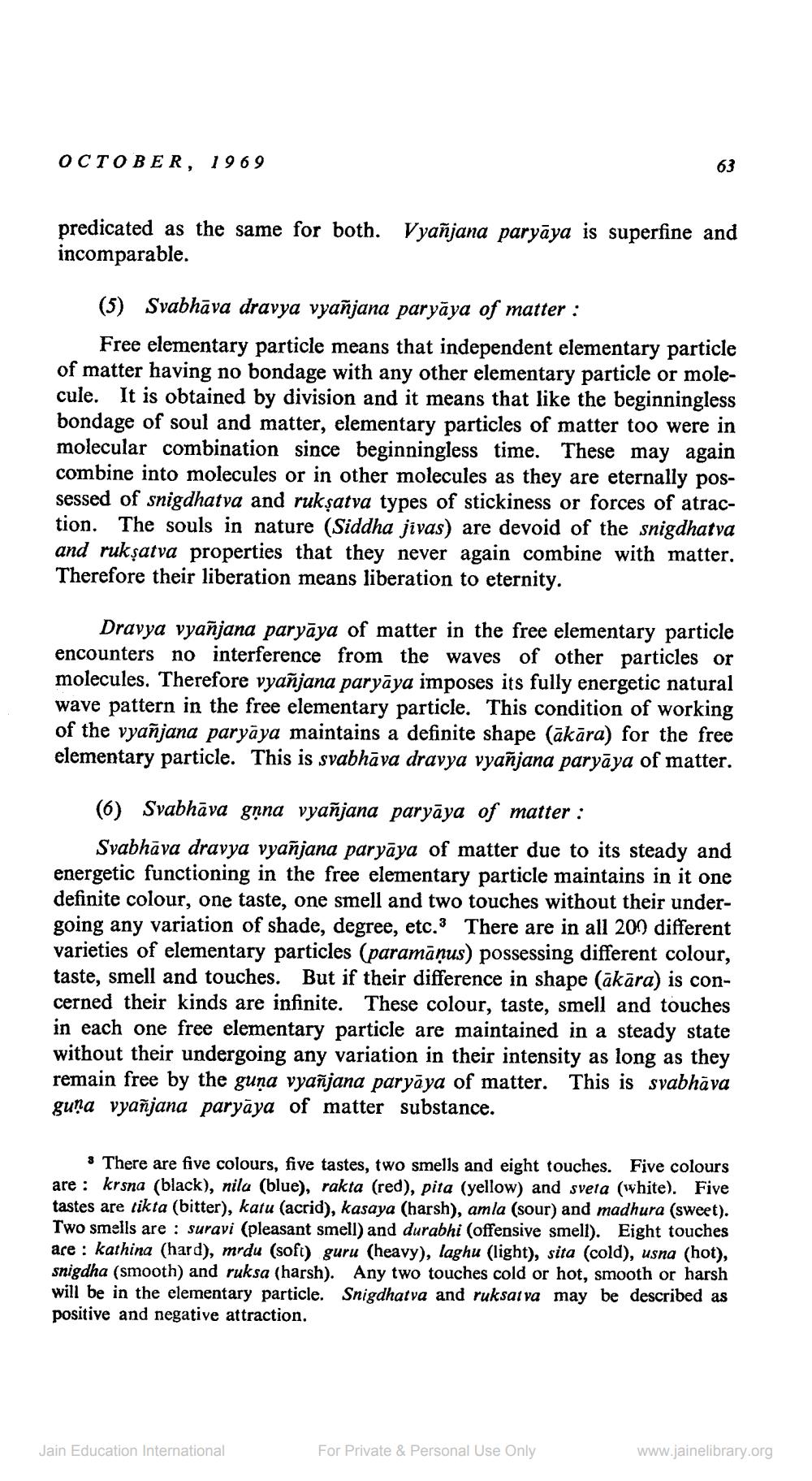________________
OCTOBER, 1969
predicated as the same for both. Vyañjana paryāya is superfine and incomparable.
(5) Svabhāva dravya vyañjana paryāya of matter :
Free elementary particle means that independent elementary particle of matter having no bondage with any other elementary particle or molecule. It is obtained by division and it means that like the beginningless bondage of soul and matter, elementary particles of matter too were in molecular combination since beginningless time. These may again combine into molecules or in other molecules as they are eternally possessed of snigdhatya and rukșatva types of stickiness or forces of atraction. The souls in nature (Siddha jivas) are devoid of the snigdhatva and rukșatva properties that they never again combine with matter. Therefore their liberation means liberation to eternity
Dravya vyañjana paryāya of matter in the free elementary particle encounters no interference from the waves of other particles or molecules. Therefore vyañjana paryāya imposes its fully energetic natural wave pattern in the free elementary particle. This condition of working of the vyañjana paryāya maintains a definite shape (äkāra) for the free elementary particle. This is svabhāva dravya vyañjana paryāya of matter.
(6) Svabhāva gạna vyañjana paryāya of matter :
Svabhāva dravya vyañjana paryāya of matter due to its steady and energetic functioning in the free elementary particle maintains in it one definite colour, one taste, one smell and two touches without their undergoing any variation of shade, degree, etc. There are in all 209 different varieties of elementary particles (paramāņus) possessing different colour, taste, smell and touches. But if their difference in shape (ākāra) is concerned their kinds are infinite. These colour, taste, smell and touches in each one free elementary particle are maintained in a steady state without their undergoing any variation in their intensity as long as they remain free by the guna vyañjana paryāya of matter. This is svabhāva guņa vyañjana paryāya of matter substance.
s There are five colours, five tastes, two smells and eight touches. Five colours are : krsna (black), nila (blue), rakta (red), pita (yellow) and sveta (white). Five tastes are tikta (bitter), katu (acrid), kasaya (harsh), amla (sour) and madhura (sweet). Two smells are : suravi (pleasant smell) and durabhi (offensive smell). Eight touches ace : kathina (hard), mrdu (soft) guru (heavy), laghu (light), sita (cold), usna (hot), snigdha (smooth) and ruksa (harsh). Any two touches cold or hot, smooth or harsh will be in the elementary particle. Snigdhatva and ruksat va may be described as positive and negative attraction.
Jain Education International
For Private & Personal Use Only
www.jainelibrary.org




